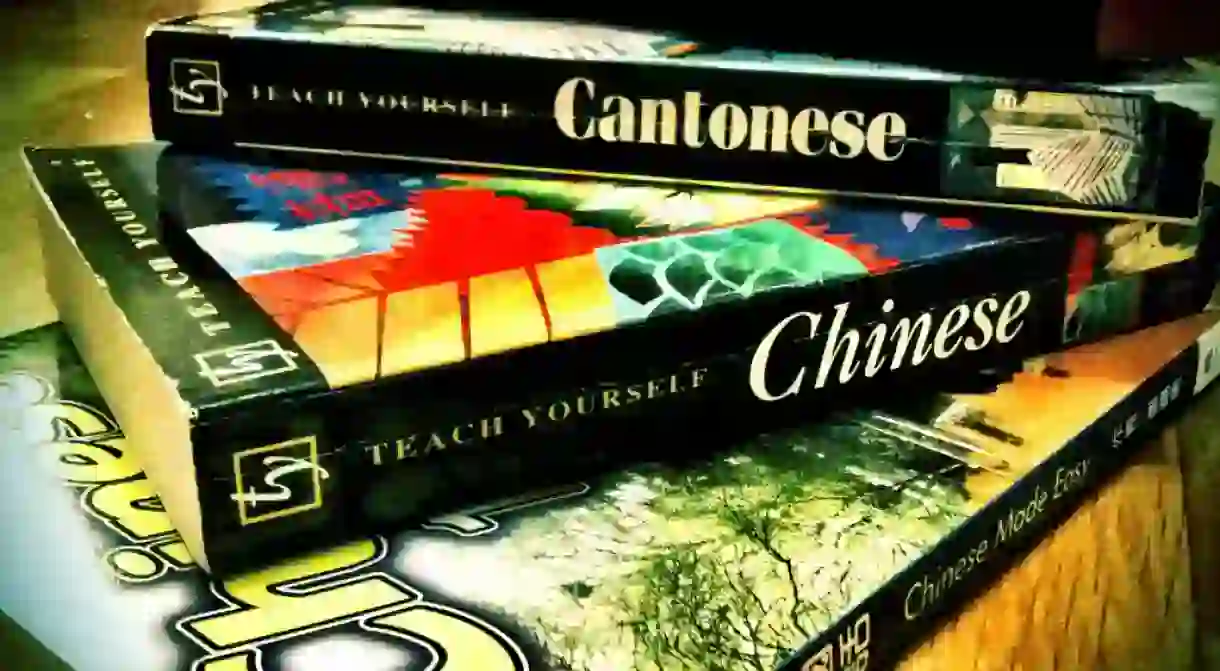9 Languages Besides Mandarin That Are Still Spoken in China

In addition to having 56 ethnic groups, China also boasts 297 living languages. Though Beijing-style Mandarin was made the one and only official language by the government in 1956, cultural tradition cannot be underestimated. Here are nine diverse and widely-spoken languages across China that are still in use today.
Uyghur
The Uyghur language is spoken by roughly 11 million people in China, primarily Uyghurs themselves. This Turkic language with Persian and Arabic influences has few similarities with Mandarin and is part of a completely different language group. The epicenter of Uyghur is the Xinjiang Uyghur Autonomous Region, China’s westernmost province. While Mandarin is the only official language in China, Uyghur is accepted as an official language in Xinjiang. It uses the Arabic script, and signs throughout the autonomous region can be read in both Arabic and Mandarin.

Cantonese
There are few things Chinese speakers hate more than the question “Do you speak Mandarin or Cantonese?” To those who don’t know any better, the two seem interchangeable. But Cantonese is not mutually intelligible with Mandarin, nor the other way around. Foreigners, particularly Americans, have a skewed perspective of the relevance of Cantonese, largely because the Chinese diaspora is overwhelmingly made up of native Cantonese speakers. That doesn’t mean Cantonese isn’t important, though. There are roughly 60 million Cantonese speakers in China, primarily in the southern province of Guangdong and in neighboring Hong Kong, where Cantonese is not the official language but is the lingua franca.
While not mutually intelligible with Mandarin, Cantonese is in the same Sino-Tibetan language group. The two are both tonally-based, but whereas Mandarin only has four tones, Cantonese has nine. So if you want to learn “Chinese,” you’re better off starting with Mandarin.
Mongolian
The Mongolian language is native to Mongolia but is spoken heavily in China’s Inner Mongolia province as well as in parts of Liaoning, Jilin, Heilongjiang, Xinjiang, and Gansu provinces. It is in still another language group, called Mongolic. Mongolia has long had influence over China, with one of China’s major dynasties even being completely Mongolian. Today, the language differs between China and Mongolia itself. In Mongolia, the language is written with the Cyrillic script, the same as is Russian and other Slavic languages, while in China, its speakers still use the traditional Mongolian script.

Hakka Chinese
Although Hakka is in the same language group as Mandarin, it contains more similarities to the Gan language, spoken primarily in Jiangxi province, than to Mandarin. It is spoken by the people group of the same name and is based throughout southern China, Taiwan, and Hong Kong. There are roughly 30 million native speakers of Hakka Chinese, making it one of the major regional languages in China. One of its most distinctive features is the use of final consonants -p, -t, and -k. Due to the scattered nature of the language’s speakers, Hakka has developed many distinct dialects, although the version spoken in northeast Guangdong is considered the standard.
Hmong
The Hmong language, sometimes known as Chuanqiandian Miao, is spoken by nearly three million people worldwide, most of whom are based in the Chinese provinces of Sichuan, Yunnan, Guizhou, and Guangxi. The Hmong people are a subgroup of the Miao ethnic minority in China, sharing a common title with at least three other ethnic groups, whose people have little mutual culture. The Hmong language is part of the Hmong-Mien family, spoken in the mountainous regions of southern China and Southeast Asia.

Shanghainese
Shanghainese is a variety of Wu Chinese spoken by Shanghai natives. It shares only 29% lexical similarity with Mandarin, making the two mutually unintelligible. While “hello” in Mandarin is “ni hao,” “hello” in Shanghainese is “nong ho.” It is helpful to pick up a few Shanghainese phrases if you plan to live in the Paris of the East, although all Shanghainese speakers can also speak Mandarin. Because a significant portion of Shanghai’s population is migrant workers, Shanghainese is sometimes used as a status symbol in the city to distinguish between natives and migrants.
Korean
Korean is the 17th most widely spoken language in the world. Of course, most of those speakers are based in one of the Koreas themselves. However, a small number of Korean speakers still exist in China, primarily in the northeast, namely Jilin province, which borders North Korea. It is one of two official languages of the Yanbian Korean Autonomous Prefecture, in the northeastern-most corner of Jilin.

Tibetan
Tibetan is spoken by, unsurprisingly, Tibetans, and is broken into three primary groups: Ü-Tsang, also known as Central Tibetan or Standard Tibetan, Kham, and Amdo. Ü-Tsang is the most widely spoken form of the language in Tibet itself, Kham spreads into western Sichuan, and Amdo is relegated primarily to Qinghai province. In Tibet, the language is unfortunately repressed, along with traditional Tibetan culture, in favor of Mandarin and dominant Han Chinese culture.
Kazakh
Kazakh, in the same Turkic language family as Uyghur, is spoken heavily in the Ili Kazakh Autonomous Prefecture in Xinjiang, although Kazakh-Chinese only make up 27% of the population here.














